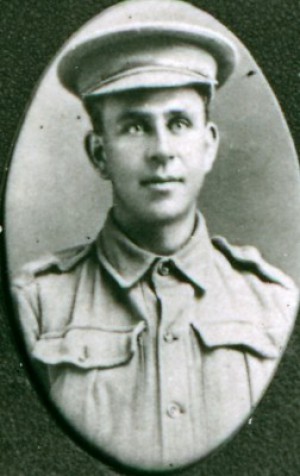Service Details
- Branch of Service
- Army
- Conflict
- World War I (1914-1918)
- Date of Enlistment
- 11/09/1915
- Date of Discharge
- 09/11/1919
- Place of Enlistment
- Goulburn NSW
Personal Details
- Gender
- Male
- Other Name(s)
- Known as 'Tarlton'
- Date of Birth
- 23/07/1888
- Place of Birth
- Carwoola NSW
- Address (at enlistment)
- Moss Vale NSW (previously Gudgenby ACT)
- Occupation
- Labourer
- Next of Kin
- Thomas Oldfield (father), Willow Grange via Moss Vale NSW
Unit and Rank Details
- Service Number
- 2212
- Final Rank
- Trooper
- Final Unit
- 4 Battalion, Imperial Camel Corps AIF
Commemoration
Queanbeyan RSL Wall of Remembrance, Crawford St, Queanbeyan NSW
Moss Vale War Memorial
Notes
Tarlton Oldfield was the brother of Edwin Oldfield and an uncle of Tom Fisher. He was born in 1888 at Carwoola (according to his attestation papers) or Adaminaby (according to the NSW Births, Deaths and Marriages), the fourth child of Thomas and Hannah Oldfield (nee Fisher). His father selected land in the upper Cotter valley in 1892 and built the Cotter Hut, where he and his family lived. Previously they had lived in the Coolamine area to the west of the Brindabellas. By the time Canberra was selected as the site for the Federal capital in 1908, Tarlton and his family were living at 'Glendale' in the Gudgenby area.
Oldfield embarked for Egypt in March 1916 and, after further training, served in Egypt from July 1916 with the 2nd Double Squadron which was involved in the defence of the Suez Canal. When the Double Squadron was disbanded he transferred, in November 1916, to the newly created 17th Company, 4th Australian Camel Regiment of the Imperial Camel Corps. The Camel Corps spent several months in early 1917 patrolling the western desert of Egypt from Luxor in the south to the Mediterranean, fighting against hostile desert tribes. They then fought the Turks in Sinai and Palestine. Oldfield was treated for septic sores and scabies during 1917, the result of the poor diet the cameleers endured. He was also hospitalised in May 1918 with gastro enteritis and diarrhoea. In September 1918 a Medical Board hearing determined that Oldfield had neurasthenia (sometimes referred to as shell shock or, in modern terms, post traumatic stress disorder).
He returned to Australia in March 1919 and was welcomed home at the Cuppacumbalong Sports Carnival in May 1919 where he was presented with a gold medal. Oldfield was discharged on 9 November 1919 in Sydney and died on 28 July 1951 in Sydney.
Description - height 5 feet 6½ inches, weight 152 pounds, chest 35-38½ inches, fair complexion, blue eyes, light brown hair, Church of England, a mole on the right side of his abdomen and a mole on the left chest.
Sources
Rex Cross, 'Bygone Queanbeyan', 1980
Matthew Higgins, 'Rugged Beyond Imagination', 2009 (references to his parents)
Matthew Higgins, 'Voices from the Hills. Places, People and Past Lifestyles in Namadgi National Park', KHA 1990
Peter Procter, 'Biographical Register of Canberra and Queanbeyan', Canberra, Heraldry and Genealogy Society of Canberra, 2001 (p.245)
Monaro Pioneers Index WW1 - www.monaropioneers.com/1st_aif_participants.htm
Our Queanbeyan 'Boys' No.2, Howard & Shearsby, Yass (postcard)
NAA RecordSearch - Series B2455 (First Australian Imperial Force Personnel Dossiers, 1914-1920)
Queanbeyan Age - 7 September 1909, 27 May 1919
